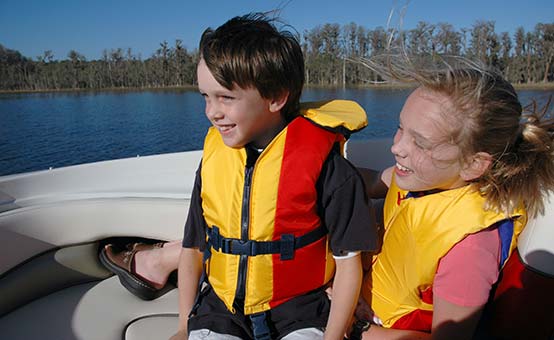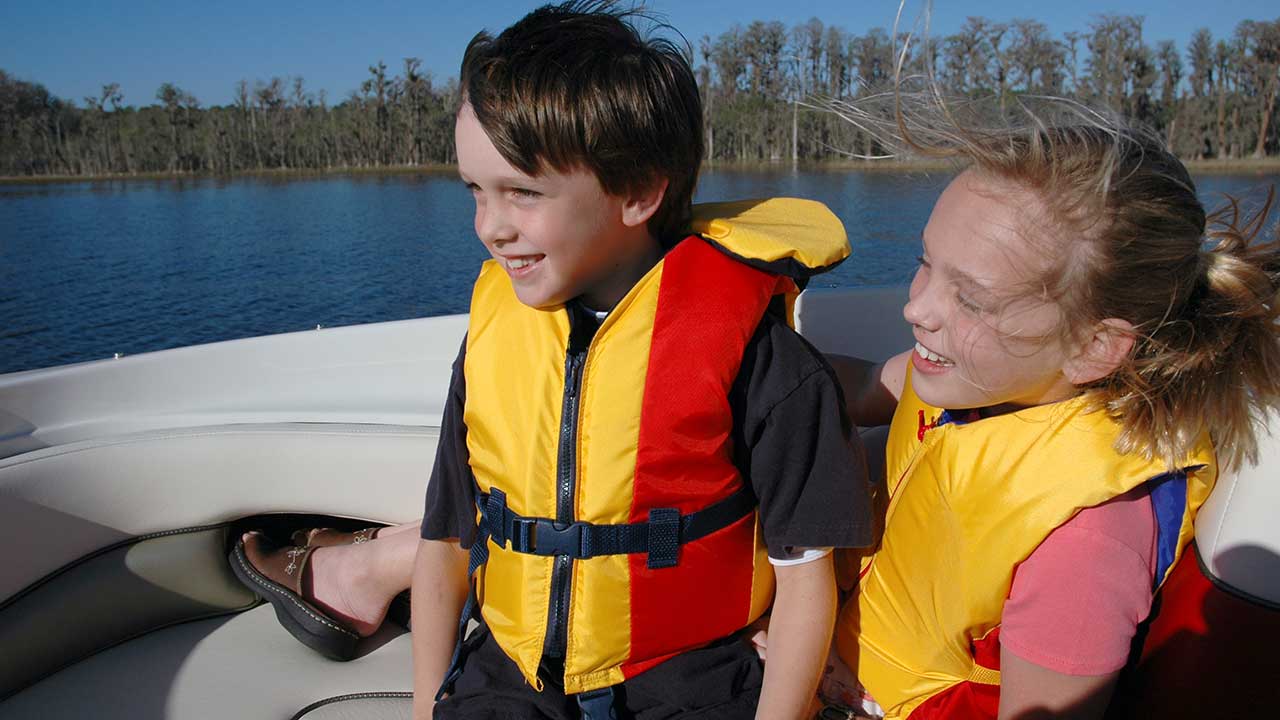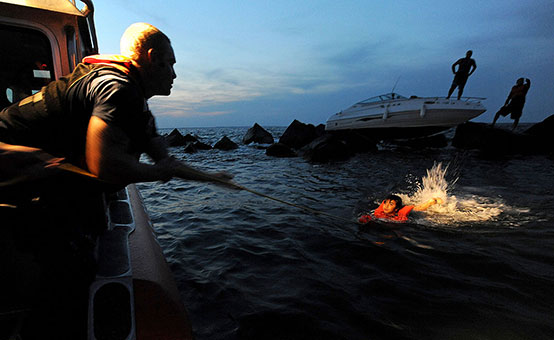

In this video post, you'll learn:
To work properly, a life jacket must fit snugly. To check for a good fit, pick the child up by the shoulders of the life jacket to ensure that his or her chin and ears cannot slip through. If one does not work well, try another style.
It's important to teach children how to put on their life jackets, and help them get used to wearing them in the water.
In addition to checking for proper weight range and comfortable fit, ensure a stable face-up position in the water. Be aware that children panic when they fall into the water suddenly, making body weight distribution a special challenge. This causes them to move their arms and legs violently, making it hard to float safely in a life jacket. A life jacket that will keep a child afloat may not keep a struggling child face-up.
Even though a child wears a life jacket when on or near the water, life jackets are not babysitters. An adult should always be there, too. Never leave a child unattended on a dock, on a boat, or in the water, even if he or she has a life jacket on.
Parents should also remember that inflatable toys and rafts should not be used in place of life jackets; and that life jackets for small children must have crotch straps plus a head cushion and strap.
Finally, while many infant car seats are approved for use in automobiles, these would sink rapidly if an infant fell overboard while seated in one, and, therefore, car seats should never be used on boats.
Moreover, life jackets currently available for newborns up to eighteen pounds may not provide a proper fit to perform as expected, and testing the specific life jacket for the specific infant in a swimming pool is imperative. Otherwise, parents should carefully consider whether infants should be exposed at all to the risks of being aboard a boat on the water.
MORE FROM
SAFE PASSAGE

BOATING SAFETY | Jun 25, 2019
Top 8 Preventable Life Jacket Fails and What to Do About It

BOATING SAFETY | May 17, 2019
Top 4 Causes of Boating Accidents and How to Prevent Them